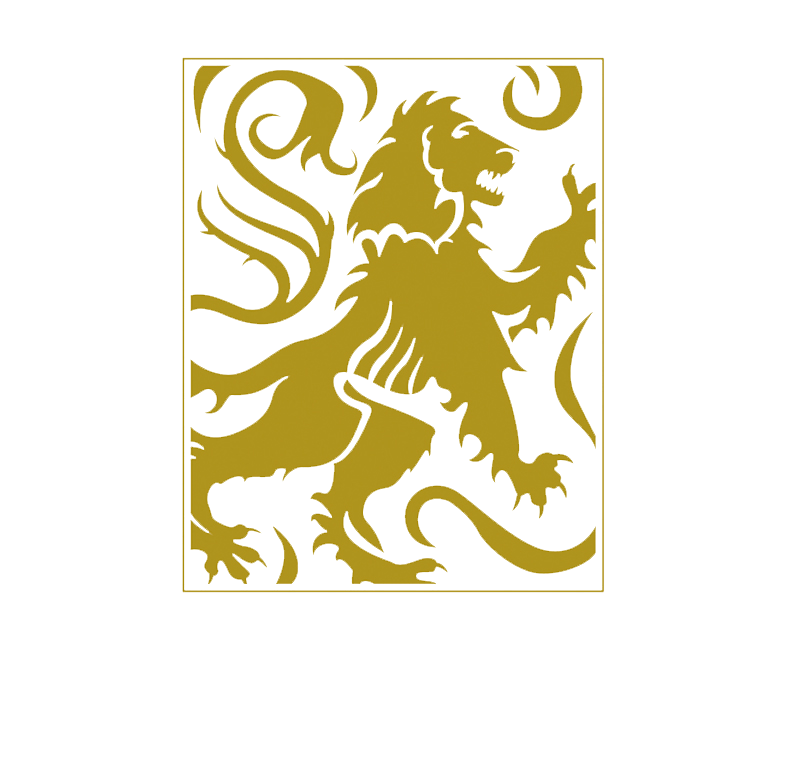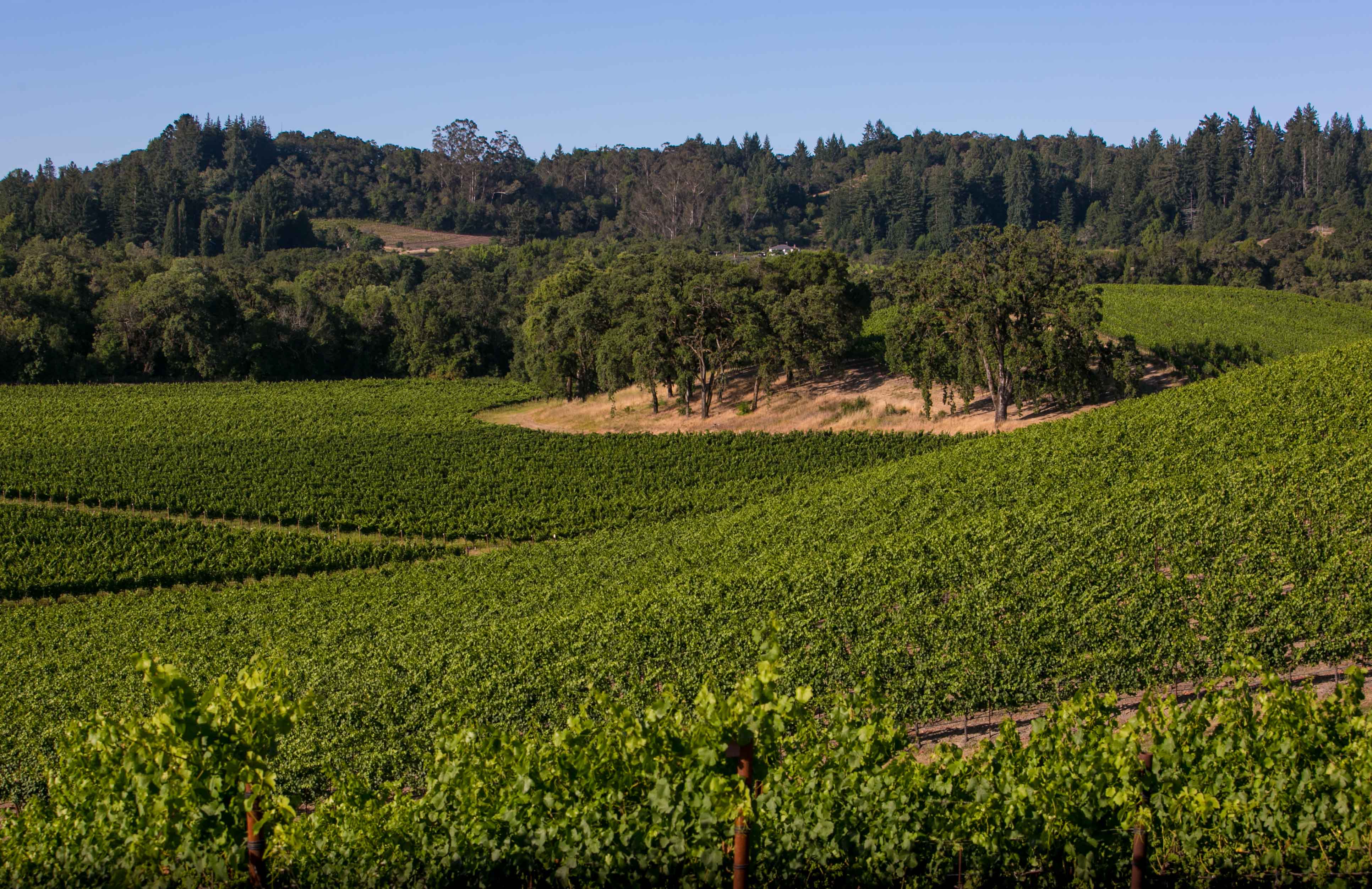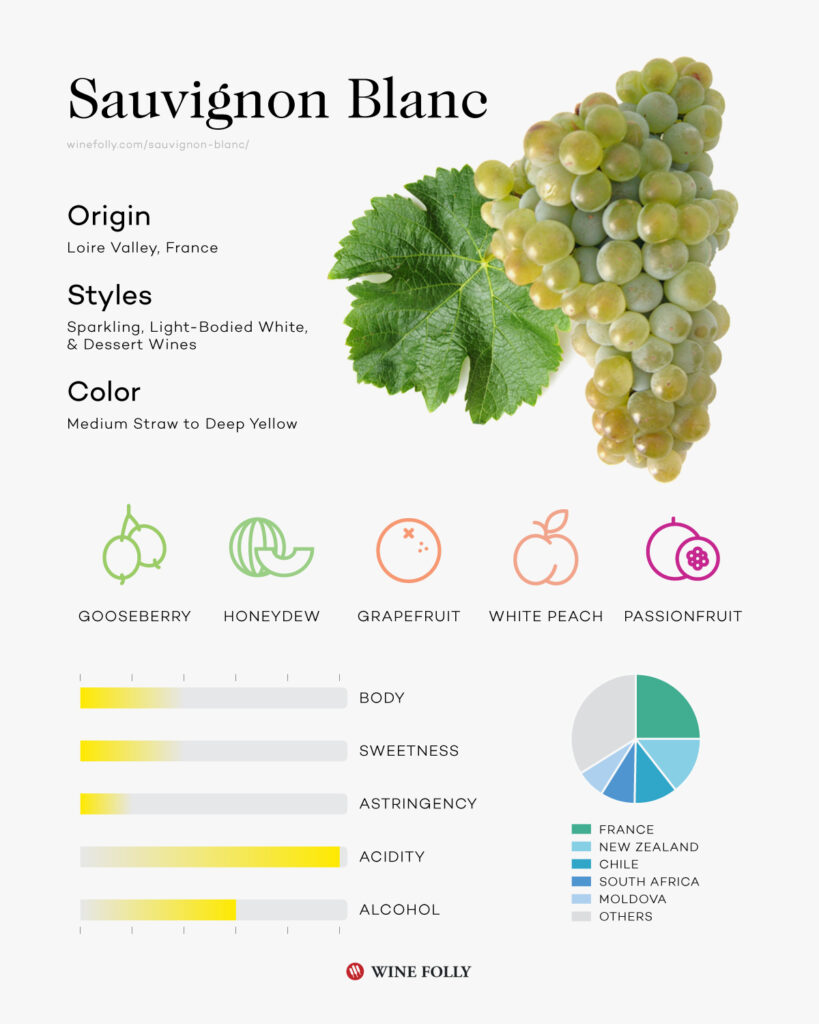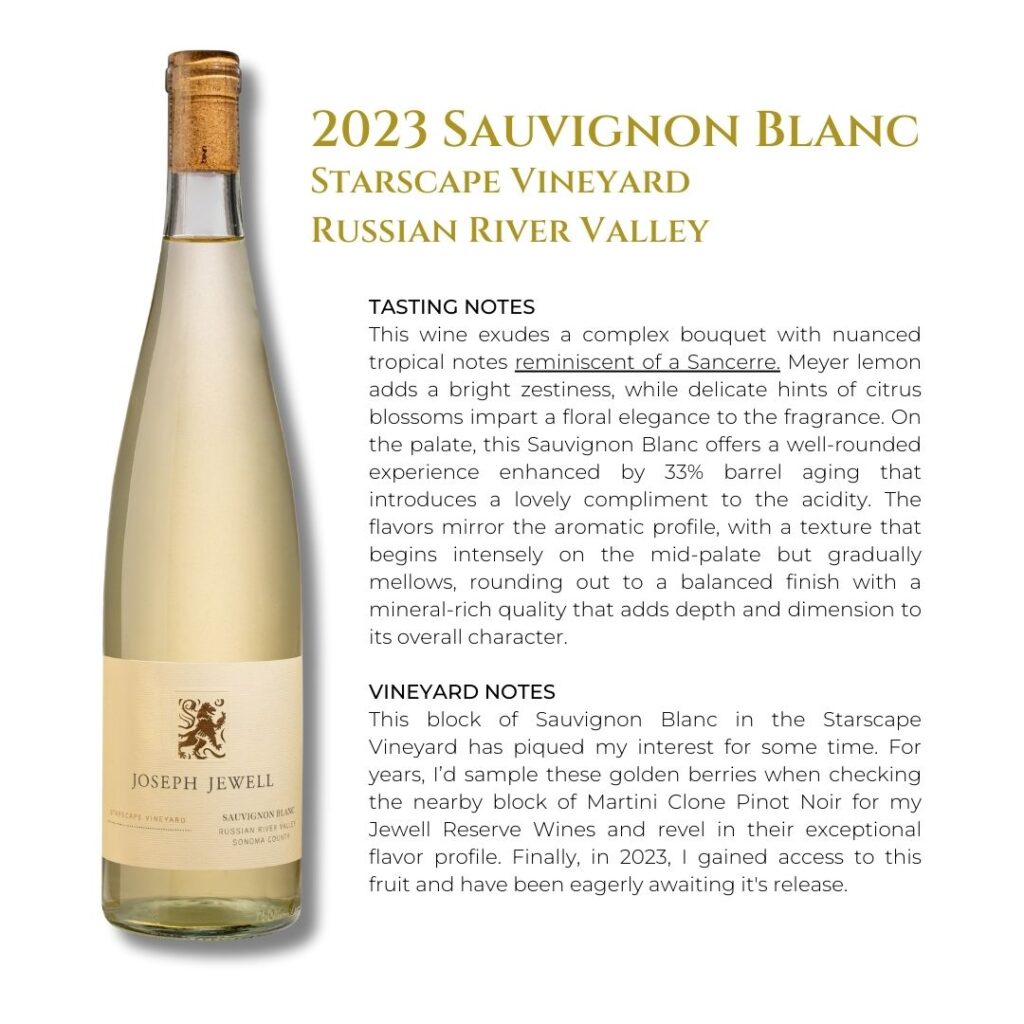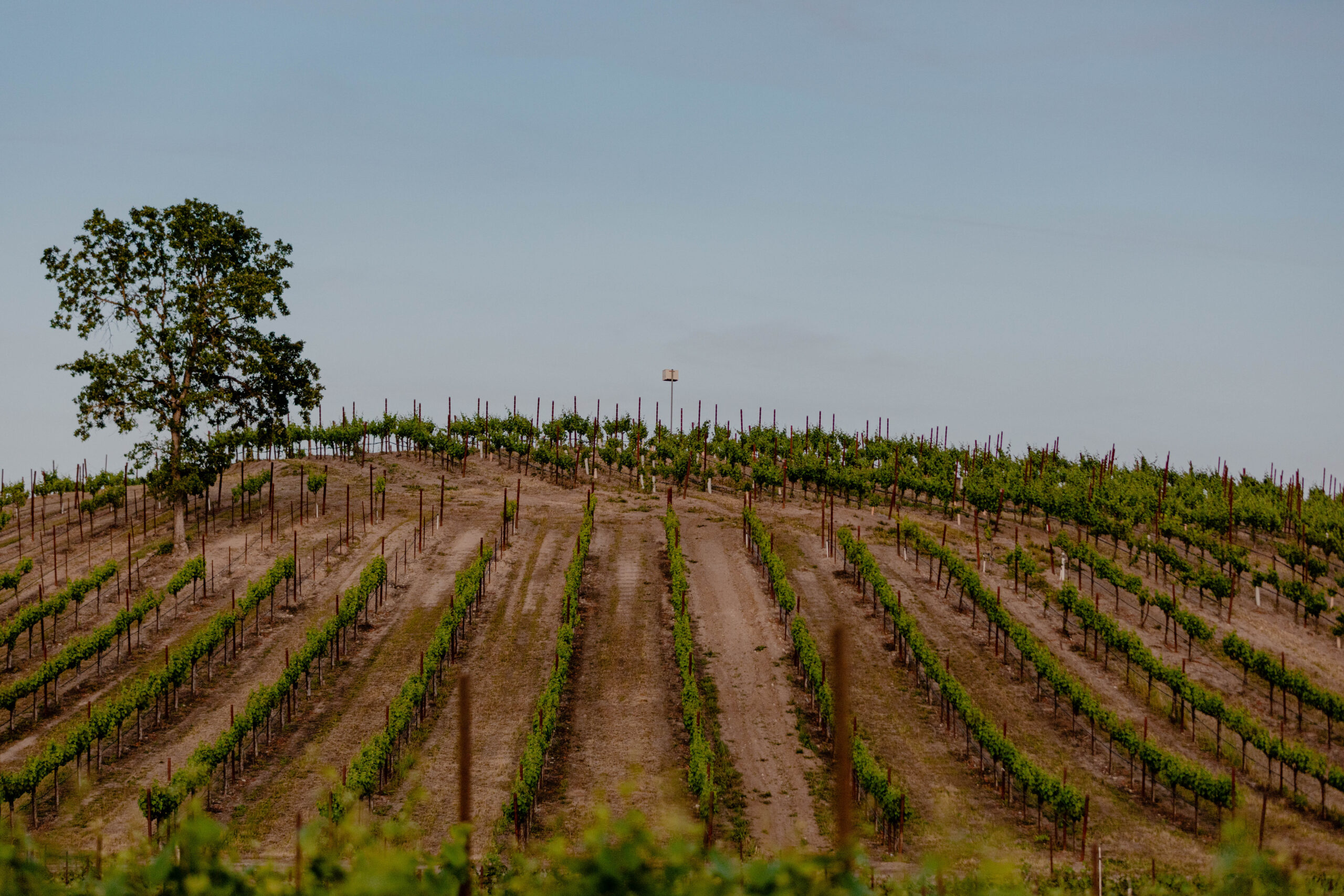
13 May (Almost) Everything You Need To Know About Sauvignon Blanc
In 2023 our winemaker Adrian Manspeaker was finally able to get his hands on a small block of Sauvignon Blanc from the Starscape Vineyard in Russian River Valley, from which we source Pinot Noir for both Joseph Jewell and our Jewell Reserve Wines. Every time he would visit Starscape to check on the Pinot, he’d sneak a golden berry from these Sauvignon Blanc vines and revel in their intense flavor.
Adrian has made Sauvignon Blanc in the past (2007-2011, and 2019) from various sites around Sonoma County. He’s even experimented with the Musqué clone–a unique mutation of Sauvignon Blanc we’ll introduce you to later in this article. However, the 2023 Starscape Sauvignon Blanc is a new exploration of this lesser-planted variety in the Russian River for him, with the resulting wine harkening more towards the style of Loire Valley than California–if you can even say California has a ‘style’ for Sauvignon Blanc!
Alas, we thought it would be a fun exercise to revisit the history of Sauvignon Blanc, the classic styles established worldwide, and dive into why this wine variety has become one of the most popular in the world.
Grab a glass and come along…
First, A Brief History of Sauvignon Blanc
Sauvignon Blanc is a white wine varietal that originated in Loire Valley, France, where it was named for its wild vigorous vines by combining the French words sauvage (wild) and vigne (vine).
When researchers studied the genetics of Sauvignon Blanc, its lineage was traced back to the ancient grape variety Savagnin, which had crossed with another (still unknown) variety to create the Sauvignon Blanc vines we have today. Before DNA typing technology existed, no one knew that Sauvignon Blanc had eventually spontaneously crossed with Cabernet Franc in Bordeaux in the 1700s to create the variety Cabernet Sauvignon. Until this discovery in the 1990s by a UC Davis PhD student named Dr. Carole Meredith, it was widely thought that a white variety could not be a genetic parent to a red variety. Quite the discovery! This is one of the many scientific contributions California’s UC Davis has brought to the wine industry, leading to its standing today as one of, if not the best, viticulture institutions in the world. It’s no surprise that Adrian chose the UC Davis University Extension Program for his education.
According to Karen MacNeil’s research, the first Sauvignon Blanc vines planted in California, circa the 1870s, were cuttings taken by Charles Wetmore from prestigious Bordeaux estates including Château d’Yquem. From these cuttings, originally planted in Livermore, vines have been propagated and planted all over California, and are now known as “Clone 1” of Sauvignon Blanc.
Another interesting discovery about the history of Sauvignon Blanc is its relation to Sauvignon Musqué. Sauvignon Musqué was originally thought to be a different varietal from Sauvignon Blanc due to both its incredibly unique aromatic qualities, and because it had been separately labeled as its own varietal when cuttings from France were examined in the 1960s. Through DNA typing, however, it was discovered to be genetically identical to Sauvignon Blanc. Thus, it is now known to be a clone of Sauvignon Blanc (often called Musqué clone), rather than a completely separate variety. Today, many California wineries will blend the Musqué clone with other Sauvignon Blanc clones to impart its tropical aromatics into the wine.
Ideal Climate, Harvesting and Winemaking Decisions Lending to Style
The ideal climate for Sauvignon Blanc is cool to moderate, with either altitude or the cooling influences of a water feature (ocean, river, etc.) to fully develop its desirable characteristics and flavors. When planted in too warm of a climate, the distinctive herbaceous qualities of the varietal will not develop and aromatics will fall flat, creating an uninteresting wine.
Furthermore, the decision of when to pick is always important, as is with any variety. For Sauvignon Blanc, specifically, picking at lower brix (concentration of sugar in the berries) levels will contribute to flavor profiles centered around the pyrazines found in Sauvignon Blanc–grassy and herbaceous. In contrast, allowing a bit more ripening on the vine will temper these strong components, leading to the development of citrus, floral, and tropical fruit characteristics. If picked too late, as is true with any grape, it will lead to a wine that lacks aromatics and depth.
In addition to the region and relative climate, another way to glean a great deal of information about the style of Sauvignon Blanc in your glass are the vessels used in aging the wine. If a winery is using only stainless steel or concrete, you’ll find the wine to generally be more crisp and fruit-driven. Alternatively, barrel-aged Sauvignon Blanc, especially if aged on the lees (dead yeast that settles in the barrel), will make richer, creamier wines.
Flavor Profiles of Common Sauvignon Blanc Regions
Today, Sauvignon Blanc is one of the most common white wines thanks to being planted in a wide range of different countries and regions around the world. From the Loire Valley and Bordeaux in France to New Zealand and California (just to name a few!), most regions have honed their unique style of Sauvignon Blanc. Furthermore, you can find Sauvignon Blanc in a wide range of sparkling, still, and dessert wines.
So, what can you expect from the most common regions making Sauvignon Blanc? Read on to learn what to expect from French, New Zealand, and California Sauvignon Blanc!
Loire Valley, France
Climate
The Loire Valley ranges from a maritime climate in the west to a continental climate in the east as it sprawls inland from the ocean. The Loire River spans the length of the region as it heads for the ocean, which greatly influences the overall climate. For the sake of this article, we will focus on the inland Centre Loire region, sometimes referred to as ‘Upper Loire’, where Sauvignon Blanc reigns.
The Centre Loire appellation (called ‘AOC’ in France) has a temperate, continental climate with a widely varying diurnal shift (range of temperatures, day to night) and ample rainfall between November and March. Vineyards are located on plateaus and hillsides with clay, limestone, flint, and gravelly sand, contributing significantly to the distinctive minerality found in these wines.
Sancerre and Pouilly-Fumé
In the Loire Valley, Sauvignon Blanc is typically labeled with the name of the specific AOC from which the grapes come; most commonly, Sancerre and Pouilly-Fumé, but is also sometimes called Sauvignon Fumé or Fumé Blanc.
Overall, this region has defined an iconic, crisp style with lots of minerality and high acidity. You can also expect notes of savory herbs, citrus, and tree fruits such as apple, peach, honeydew melon, and pear when drinking Sauvignon Blanc from Loire Valley.
Fun Fact: As we mentioned before, our 2023 Sauvignon Blanc from the Starscape Vineyard in the Russian River Valley stylistically resembles a Sancerre from the Loire Valley… Yum! Shop 2023 Sauvignon Blanc
Bordeaux, France
Bordeaux has a warm, maritime climate and is considered to be pretty wet–due to the region’s immediate proximity to the Atlantic–which is surprising when thinking about Cabernet Sauvignon’s affinity to being sun-drenched. There are three general soil types in Bordeaux, distinguished by their location relative to the rivers of the region: Left Bank and Right Bank. The left bank has more gravelly soils, whereas the Right Bank has more clay and limestone.
Bordeaux Blanc
Similarly to how they do it in the Loire Valley– labeling the wine by its region–Sauvignon Blanc from Bordeaux will fall under the labeled name of Bordeaux Blanc. It is important to note, however, that most Bordeaux Blanc wines are actually a blend of Sauvignon Blanc and Semillon. (There are a few other varieties that can come into play but most Bordeaux Blancs are made from Sauvignon Blanc and Semillon.)
Typically speaking, Bordeaux Blanc is light and fruity, dominated by strong lemon/lime citrus notes with gooseberry, grapefruit, honeysuckle, and wet concrete. That being said, you will also find richer, creamier versions of Bordeaux Blanc if the wine is aged in oak, on lees, or if the blend leans heavier into Semillon, which is fuller bodied and more viscous on the palate.
Sauternes
We would be remiss to leave out perhaps the most famous dessert wine in the world: Sauternes. This rich, creamy sweet wine is made from varying blends of Sauvignon Blanc, Semillon, and Muscadelle that have succumbed to botrytis (noble rot) in the vineyard. Seductive flavors of honey, butterscotch, caramel, marmalade, and toasted baking spices intermingling with citrus will quite literally leap from the glass!
Fun Fact: Remember the illustrious Château d’Yquem previously mentioned in this article, where some of California’s original Sauvignon Blanc cuttings came? At our Winemaker Dinner in July 2023, we poured a few bottles of the 1989 Château d’Yquem Sauternes for our guests, compliments of Suzanne Farver’s personal collection. The dinner was hosted at her Panther Ridge Vineyards estate. We basically fell out of our chairs!
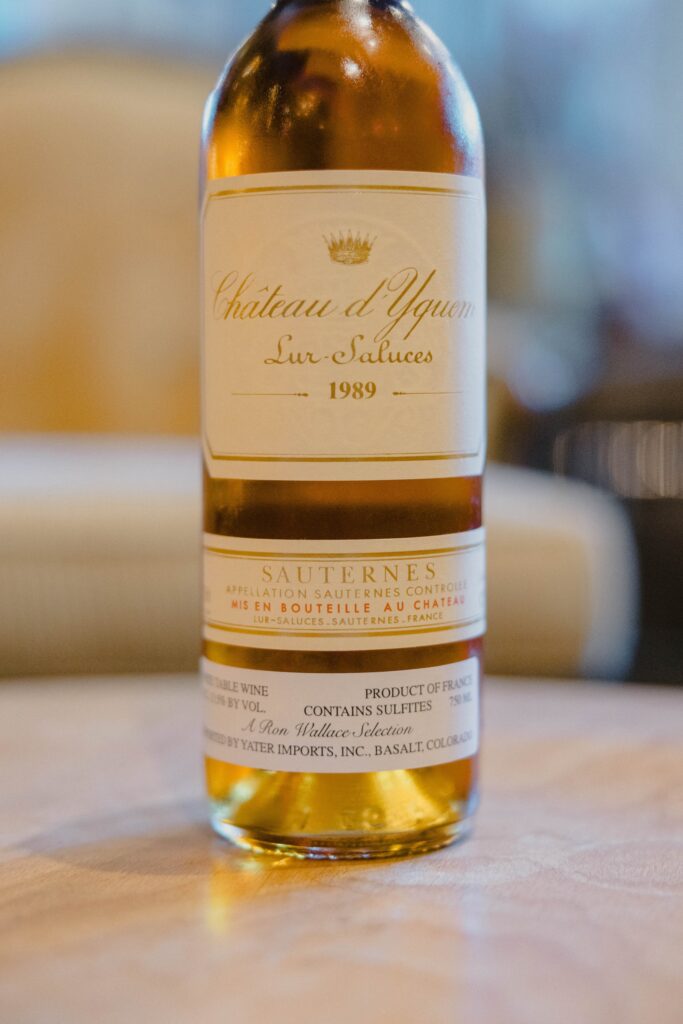
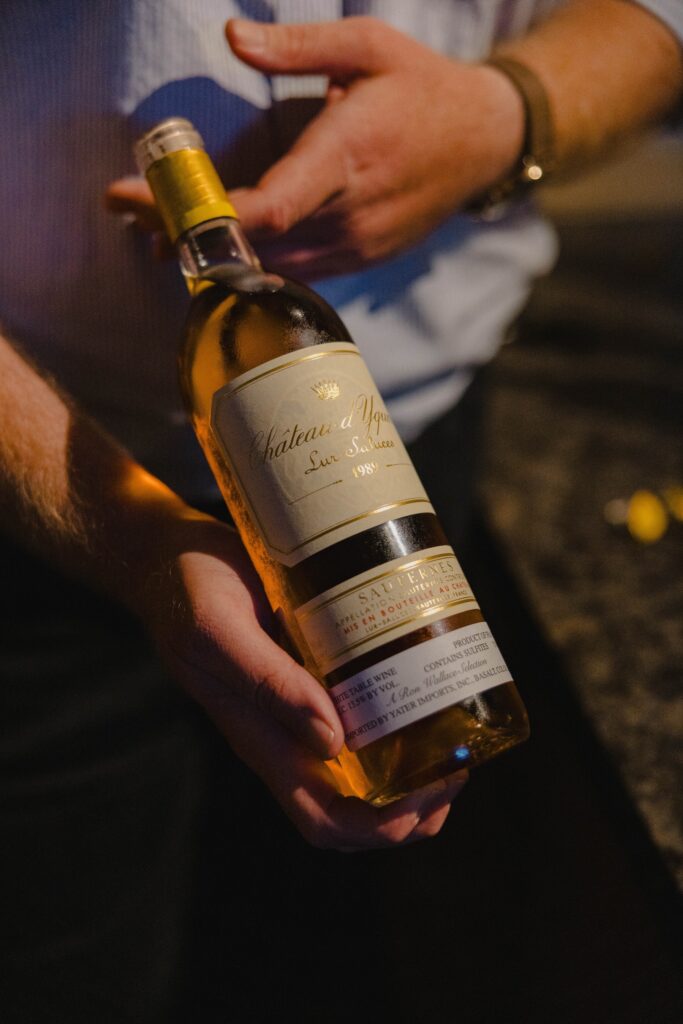
New Zealand
New Zealand is now commonly considered the Sauvignon Blanc capital of the world, despite only producing about 1% of the world’s wine. (Reference: WineFolly) Most of New Zealand’s several wine-growing regions are cool, maritime climates with cool nights and long, sunny days. Well-draining gravel and loam soils dominate the Marlborough region from which most Sauvignon Blanc comes.
If we were to use just one descriptor for New Zealand Sauvignon Blanc it would be grassy! In combination with the classic fresh-cut grass aromas, you’ll find flavors of lime, gooseberry, tomato leaf, and jalapeno in combination with tropical fruits such as passionfruit and pineapple.
California
Trying to place California Sauvignon Blanc into one stylistic category would be like trying to put all of France’s Sauvignon Blancs into one as well–simply put, it’s impossible. With our state’s many wine-growing regions, all with unique climates and terroir, you can find a vast range of Sauvignon Blanc styles in California.
In the United States, wines labeled as Fumé Blanc are now deemed synonymous with Sauvignon Blanc by US wine labeling laws. Introduced by none other than the proverbial grandfather of American wine, Robert Mondavi, labeling wine as Fumé Blanc was initially a marketing decision and not meant to indicate the style. Today, many California wineries use this moniker for Sauvignon Blanc made in a wide range of styles but typically it refers to Sauvignon Blanc which has had some level of barrel aging, giving the wines a richer, rounder profile.
As a broad generalization, it can be inferred that winemakers look to the iconic regions of Loire (like our winemaker, Adrian), Bordeaux, or even New Zealand, as benchmarks for the style they decide to adopt. From there, through careful farming, harvesting, and winemaking decisions, winemakers create their ‘California spin’ (so to speak) on their version of this classic variety.
This brings us back to our initial point: California does not have one specific, overarching style of Sauvignon Blanc. We could go so far as to say that California has struggled to adopt a style known around the world. In many ways, this makes sense considering the vast array of climates, soil types, and our freedom from regional regulations, like our friends in France have to adhere to. Winemakers in California can plant what they want, where they want, and make wine in any style they want. It begs the question, is this a ‘struggle’ or a benefit? That’s a whole other story for another time. In the meantime, feel free to ponder it over your next glass…
Napa Valley
For many, Napa Valley as a region is thought of as the American ‘Bordeaux equivalent’ where Cabernet Sauvignon reigns king, so it’s not surprising that Sauvignon Blanc (its genetic parent) is also grown in Napa Valley amongst Cabernet.
Napa’s climate is classified as Mediterranean, which is rare and ideal for most grape growing but is surprisingly leaning towards ‘too warm’ for Sauvignon Blanc. (According to Wine Folly, only 2% of the world falls into the Mediterranean category!) Thanks to the San Pablo Bay just to the south, however, the valley does get a cooling effect with strong diurnal ranges that help to moderate the heat. As far as soil types go, the Napa Valley AVA contains the widest range and variety of soil types of any wine-growing region in the world.
In Napa, the use of oak in the aging process with Sauvignon Blanc is common in order to add complexity and richness. Some aromas and flavors found in Napa Valley Sauvignon Blanc are white peach, grapefruit, and honeydew melon, however, you will also find plenty of examples that are dominated by that classic Sauvignon Blanc gooseberry as well.
Sonoma County & Russian River Valley
Did you know that Sauvignon Blanc is the second-most planted white wine variety in Sonoma County after Chardonnay? (Reference: sonomacounty.com) Sonoma County is also large, boasting 19 distinct AVAs with unique climates and geology that distinguish each from the other.
Regional characteristics of Sauvignon Blanc grown in Sonoma County are honeydew melon, pineapple, and green apple. You’ll also find plenty of examples of the Musqué clone blended with more traditional Sauvignon Blanc clones in Sonoma County to impart its tropical aromatics.
In the Russian River Valley specifically, home to Joseph Jewell and our Starscape Vineyard Sauvignon Blanc, the AVA has a cool climate with warm days punctuated by fog that rolls in from the Pacific Ocean just to the west. Because of this natural cooling effect, the Russian River Valley is better suited to growing Sauvignon Blanc than many of the warmer AVAs of Sonoma County. Still, not many Sauvignon Blanc vineyards are planted here, making it even more interesting to explore.
The Starscape Vineyard, from which we source our Sauvignon Blanc, rests in a crook where the Russian River turns west towards the Pacific Ocean. This special topography creates a perfect pathway for the coastal fog to funnel into the vineyard, providing cooler evening and early morning temperatures that shape the vibrant acidity of the wines from Starscape. Our block of Sauvignon Blanc in the Starscape Vineyard has piqued our winemaker Adrian Manspeaker’s interest for some time.
The wine exudes a complex bouquet with nuanced tropical notes reminiscent of a Sancerre. Meyer lemon adds a bright zestiness, while delicate hints of citrus blossoms impart a floral elegance to the fragrance. On the palate, this Sauvignon Blanc offers a well-rounded experience enhanced by 33% barrel aging that introduces a lovely compliment to the acidity. The flavors mirror the aromatic profile, with a texture that begins intensely on the mid-palate but gradually mellows, rounding out to a balanced finish with a mineral-rich quality that adds depth and dimension to its overall character. Shop our 2023 Sauvignon Blanc.
The Best Food Pairing for Sauvignon Blanc
A phrase used way too often in the wine industry (but we will use it anyway since it’s spot on!) is, ‘What grows together, goes together.’ This means that regional pairings are always a great place to start when in doubt, especially when selecting cheese! And speaking of cheese, arguably the best cheese to serve with Sauvignon Blanc is goat cheese. It ranges from tart and pungent to soft and nuanced, and you can also find it infused with herbs to complement the herbaceous qualities in many Sauvignon Blancs.
Wine Folly has some fantastic recommendations for pairing Sauvignon Blanc. Read the full article here but here are their general guidelines:
Meat Pairing: The wine is light, so keep your pairings light: try chicken, turkey, pork, halibut, crab, lobster, haddock, bass, cod, salmon, oysters w/ mignonette, calamari, or smoked salmon.
Cheese Pairing: Seek out soft, flavorful cheeses like this warm goat cheese salad. Goat cheese, burrata, mozzarella di bufala (in a caprese salad), goat gouda, feta, parmesan, ricotta salata, yogurt, crème fraîche, or sour cream.
Vegetable Pairing: Inspirations include cucumber dill salad, fried zucchini, asparagus risotto, and Greek pasta salad. Try green peas, arugula, tomato, artichoke, lemon, lime, zucchini, bell pepper, eggplant, leek, and green bean.
Spices & Herbs: Mint, dill, cilantro, chive, rosemary, basil, thyme, bay leaf, caper, pesto, garlic, and green olive.
Lastly, here are a few of our favorite dishes to serve with Sauvignon Blanc:
Arugula Salad With Peaches, Goat Cheese and Basil
We like to sometimes sub the pine nuts for pistachios instead. Also, consider using a simple lemon and olive oil dressing instead of a vinaigrette.
This dish is great with or without the pesto!
Chicken is a great meat to pair with Sauvignon Blanc and the combination with lemon and capers makes it even more ideal!
Cheers!
Sources
- Karen MacNeil – The History of Sauvignon Blanc – https://www.karenmacneil.com/the-history-of-sauvignon-blanc-plus-the-musque-muddle/
- Sonoma County Winegrowers – https://www.sonomacounty.com/articles/sauvignon-blanc-sonoma-county/
- Wine Folly
- Napa Valley Terroir – https://napa.guides.winefolly.com/terroir/
- The Comprehensive Guide to Sauvigon Blanc – https://winefolly.com/grapes/sauvignon-blanc/
- 7 Regions Define New Zealand Sauvignon Blanc – https://winefolly.com/deep-dive/new-zealand-sauvignon-blanc/
